This Webpage Title
Japan - Food

| About the Country |
|---|
Japanese restaurants often display their dishes in the window. But they are not 'real' food dishes' but plastic replicas, such as in the photos below:
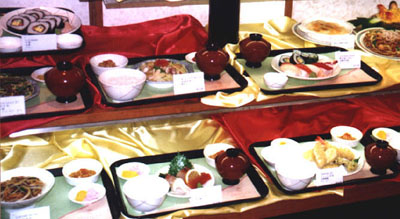
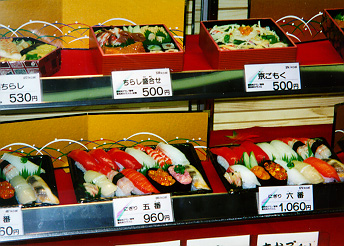

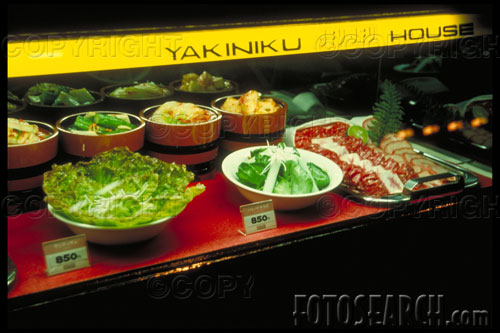
Styles of Japanese Cuisine

The following is a listing of the various styles of Japanese cuisines:
Bento
Bento are box lunches. Fast, easy and cheap. What more could you ask for after wandering the streets of Tokyo? The ingredients in bento vary greatly (some have sushi, some have pickles, etc.), and most bento stands will offer a wide variety, so it usually isn't difficult to find a combination you'll enjoy. Make no doubt about it: in Tokyo, bento are your best dining value.
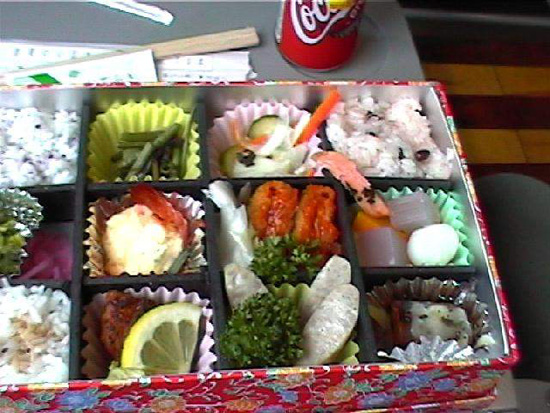
Fugu
Fugu is possibly the most exotic and dangerous food known to the world. If not properly prepared, it really can cause death. Fugu chefs in Japan are strictly licensed and highly trained to prevent accidents.
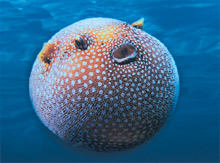
Kaiseki
This expensive cuisine appeals to highly aesthetic diner. Meals are modelled on the four seasons, and the consumer is treated to many small dishes, each involving much time and skill, that evoke a particular time of year. Kaiseki meals are generally served as "set" menus, although some restaurants serve mini-kaiseki for lunch.

Kamameshi
A rice casserole dish with meats and vegetables.
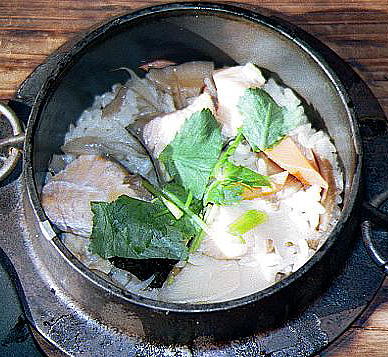
Kushiage
This style generally consists of deep-frying meats and seasonal vegetables on long skewers. Generally, the restaurant has a fixed price menu.
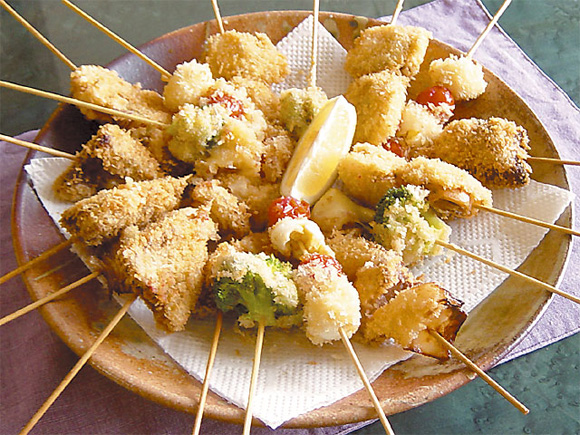
Nabe
Nabe is old-style cooking consisting of a stew served in its pot.
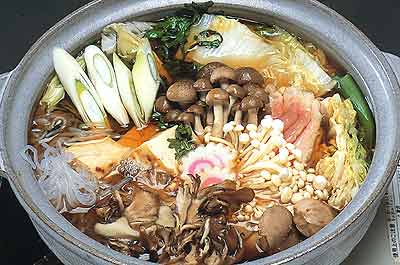
Noodles
You can buy noodles on just about every street corner in Tokyo. Shops serve a variety, including soba (buckwheat noodles served hot or cold), udon (fat, white noodles), ramen (actually these are Chinese noodles, still very popular in Japan), yakisoba (fried noodles), or somen (cold summer noodles). Noodle shops are great for quick meals and are generally inexpensive.

Oden
An oden restaurant serves a variety of items that have been simmered in broth.

Okonomiyaki
Street food consisting of pancake like bread with meat, fish, and/or vegetables added. Some restaurants permit the consumer to prepare their okonomiyaki directly at the tables.
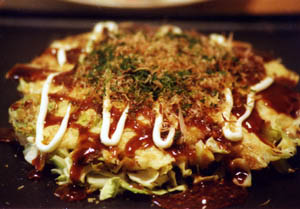
Rice
The staple of Japanese cuisine, rice is generally eaten with every meal. It is prepared in a manner that makes it sticky enough to be easily maneuvered with chopsticks.
Here is a dish of Gohan with Ikura - fish eggs.
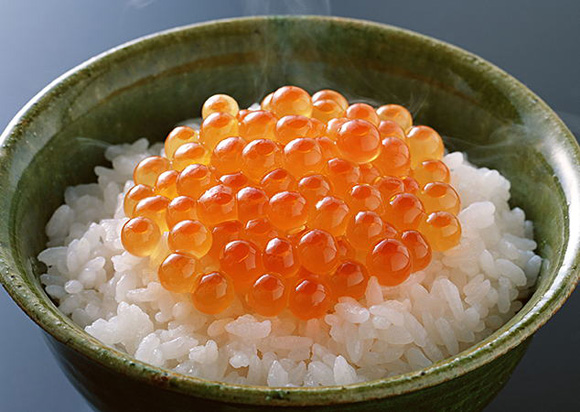
Robatayaki
A traditional style of cooking that involves preparing meats and vegetables over a grill. All the usual suspects are prepared in robatayaki restaurants, and many include lesser known specialties such as nikujaga (meat and potato stew).
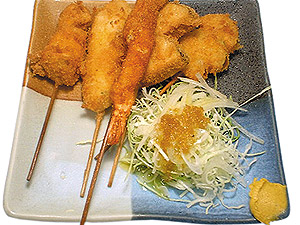
Shabu-Shabu
This type of meal is prepared at your table. Thin slices of beef are prepared quickly in broths containing vegetables.
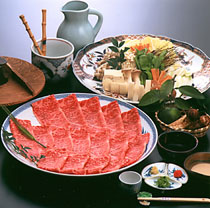
Sukiyaki
Similar to shabu-shabu, except the broth is made of soy sauce and sake. Traditionally, diners take what they want front the pot, and dip the food in raw egg before consuming (this step can be skipped, if you desire).
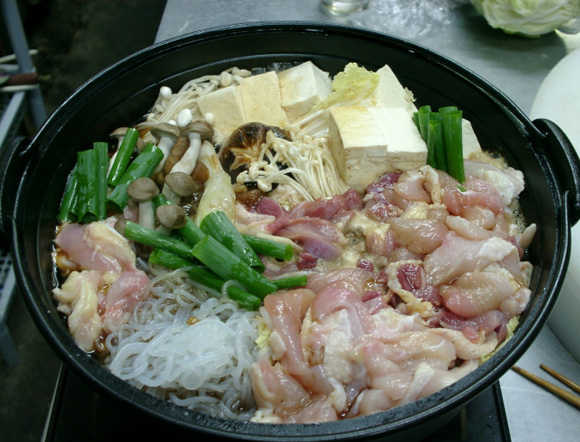
Sushi
Sushi and its cousin, sashimi are the most well-known of Japanese foods. While many people feel uncomfortable with the idea of eating raw fish, this squeamishness disappears after a first encounter with meguro (tuna).
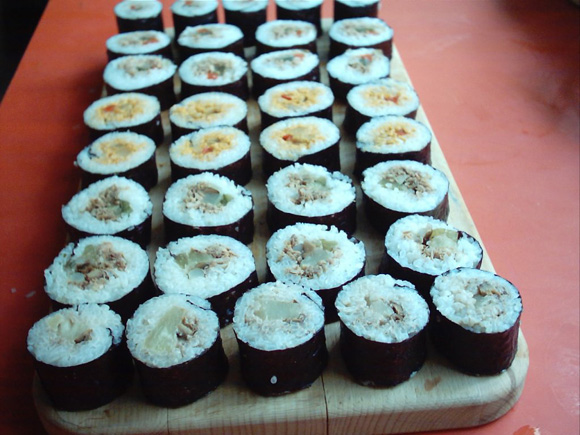
Sashimi is just the seafood while sushi can have a variety of other ingredients, along with rice. After dipping the selection in a mix of soy sauce and wasabi, the entire piece is consumed in one bite. Etiquette note: while purists insist that sushi must be eaten with chopsticks, treating it as finger food is perfectly acceptable.

Tempura
Tempura are foods that have been deep fried after being dipped in a batter. The result is light and delicate (and incredibly hot -- be prepared). If you're feeling adventurous, order the teishoku (daily special), otherwise point to the appropriate plastic food display.
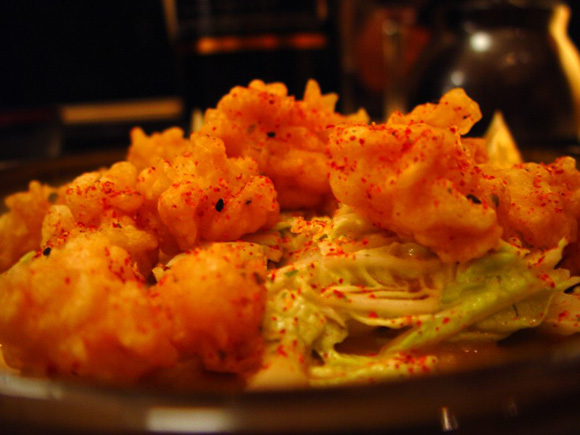
Teppanyaki
Essentially, a teppanyaki restaurant is a Japanese steakhouse. While you don't always get the Westernized showmanship of a Benihana's, this type of restaurant does focus on preparation and presentation.
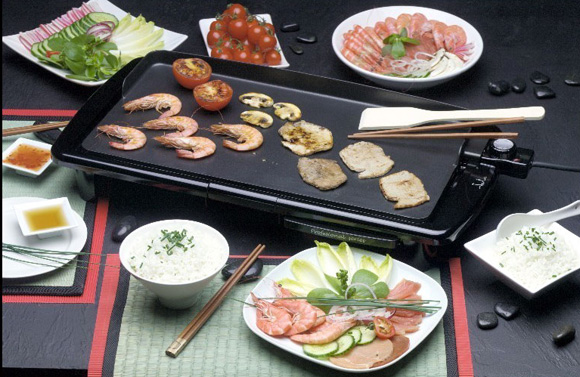
Tonkatsu
A traditional style meal consisting of a pork cutlet coated in batter and deep fried. Again the teishoku is a good way to experiment.
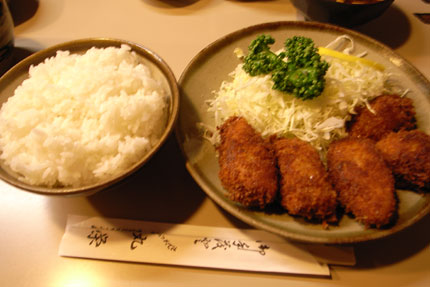
Unagi
Unagi is eel, and can be had as sushi or broiled. Unagi is considered by many Japanese to be health food.
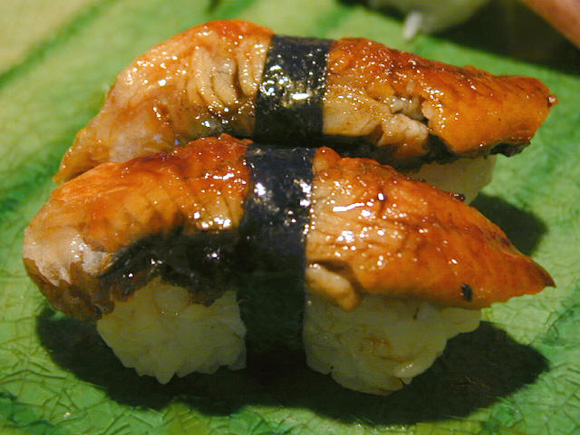
Yakitori
Chicken grilled on skewers (the less adventurous type should take care in ordering -- yakitori chefs pride themselves on using every available part of the chicken). Yakitori-ya are usually identified by red paper lanterns hanging outside.
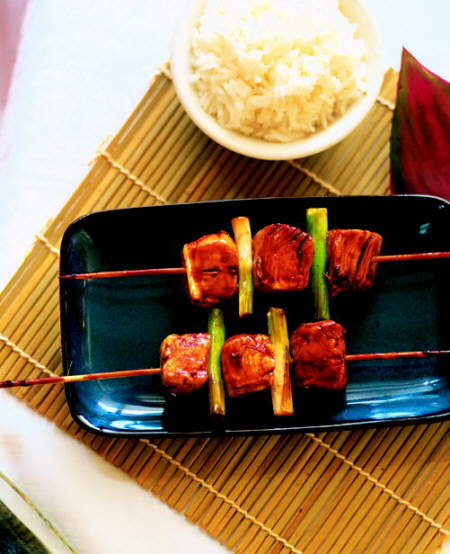
Chicken Yakitori
